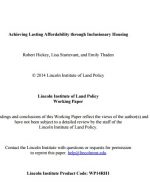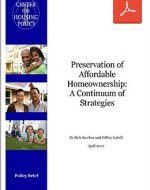While legal documents provide the basic framework for preserving long-term affordability, many communities have concluded that legal documents alone are insufficient. Proactive stewardship and ongoing monitoring and support of homeowners are necessary to successfully preserve affordability of affordable homes over the very long term.
A study of inclusionary housing programs in California found that programs experienced fewer losses of both rental and ownership inclusionary units when the program had strong monitoring procedures.* The Grounded Solutions Network has established a detailed set of stewardship standards that outline best practices for proactive management of units with long-term affordability requirements.




